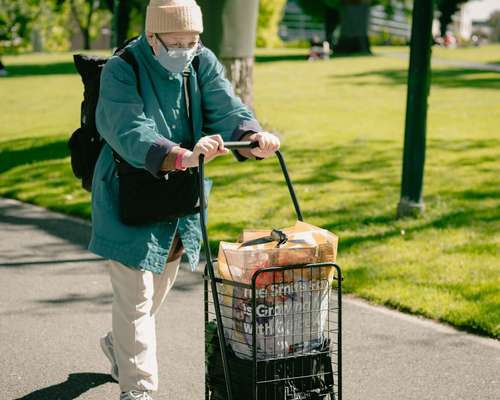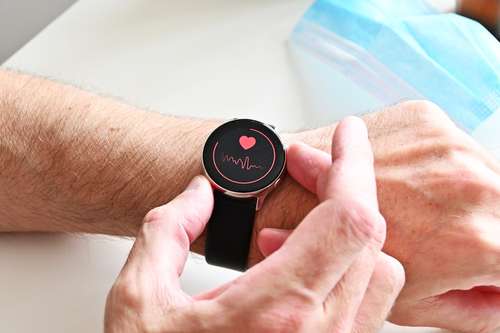According to a study, about a third of melanomas detected during routine skin exams may not be hazardous.
Detections were much greater among individuals who had their skin evaluated by a clinician before entering in the study, according to the observational study, which followed roughly 44,000 Queenslanders aged 40–69 years with no prior history of melanoma for seven years.
According to the study's lead author, QIMR Berghofer Medical Research Institute cancer specialist David Whiteman, up to 29% of melanomas diagnosed during skin checks may never have been discovered if the person had not been checked.
"It shows that skin exams and biopsies are picking up things that look and feel like melanomas but don't always behave or cause harm," he said.
"They appear like a melanoma under the microscope, and they look like a melanoma on the skin, but for some reason, a proportion of them... will just stay on your skin and never burrow deeper or spread further."
Professor Whiteman stated that the study did not change the significance of Australians being sun safe and having regular skin cancer screenings.
[caption id="attachment_11473" align="aligncenter" width="659"]

Professor David Whiteman, head of QIMR Berghofer’s Cancer Control Group in Brisbane, said the results could lead to exciting changes.[/caption]
However, it opened the door to some "promising" research opportunities to better disease diagnosis and treatment.
"We can't distinguish which are the terrible ones and which are the good ones at this point," Professor Whiteman added.
"It might be an immunological thing, a genetic thing, a molecular thing... something we haven't discovered yet that makes it less aggressive and more benign."
Prevention still the best protection
Genetic researchers at QIMR Berghofer are already looking into whether certain genes in melanoma cells influence the behavior of the skin cancer, perhaps leading to the development of a more dangerous disease.
Professor Whiteman said, "We want to be able to run a test to identify if particular melanomas themselves possess a mutation that makes their melanomas more or less dangerous."
He said that some people may have inherited genes that make them less susceptible to cancer's impacts.
"Those folks may have a genetic sensitivity or strength, if you will," he said, "that raises or lessens the probability of a melanoma spreading in their body."
Another explanation is that there are disparities in immune systems.
Professor Whiteman added, "We do know that our immune systems mount an immunological response to malignancies, notably melanomas."
"Because melanomas are frequently extensively altered tumors, they often express a plethora of strange proteins on their surfaces, which can elicit an immune response."
Findings could alleviate stress, healthcare system pressures
[caption id="attachment_11474" align="aligncenter" width="680"]

Queenslanders have the highest rate skin cancers in the world.[/caption]
He believes that more research will lead to better diagnostic tools.
"Patients with melanoma must accept the fact that they have a potentially lethal malignancy and must have ongoing check-ups and scans," he said.
"If we can discriminate between melanomas with a good prognosis and those with a poor prognosis, we might be able to provide patients with more accurate information about their status and better treatment options."
"It would also relieve strain on the healthcare system, as melanoma treatment is quite expensive."
People should periodically examine their skin and visit their doctor if they observe any changes, such as a new spot or changes in the size, shape, or color of an existing spot, according to Cancer Council Australia.
 Professor David Whiteman, head of QIMR Berghofer’s Cancer Control Group in Brisbane, said the results could lead to exciting changes.[/caption]
However, it opened the door to some "promising" research opportunities to better disease diagnosis and treatment.
"We can't distinguish which are the terrible ones and which are the good ones at this point," Professor Whiteman added.
"It might be an immunological thing, a genetic thing, a molecular thing... something we haven't discovered yet that makes it less aggressive and more benign."
Professor David Whiteman, head of QIMR Berghofer’s Cancer Control Group in Brisbane, said the results could lead to exciting changes.[/caption]
However, it opened the door to some "promising" research opportunities to better disease diagnosis and treatment.
"We can't distinguish which are the terrible ones and which are the good ones at this point," Professor Whiteman added.
"It might be an immunological thing, a genetic thing, a molecular thing... something we haven't discovered yet that makes it less aggressive and more benign."
 Queenslanders have the highest rate skin cancers in the world.[/caption]
He believes that more research will lead to better diagnostic tools.
"Patients with melanoma must accept the fact that they have a potentially lethal malignancy and must have ongoing check-ups and scans," he said.
"If we can discriminate between melanomas with a good prognosis and those with a poor prognosis, we might be able to provide patients with more accurate information about their status and better treatment options."
"It would also relieve strain on the healthcare system, as melanoma treatment is quite expensive."
People should periodically examine their skin and visit their doctor if they observe any changes, such as a new spot or changes in the size, shape, or color of an existing spot, according to Cancer Council Australia.
Queenslanders have the highest rate skin cancers in the world.[/caption]
He believes that more research will lead to better diagnostic tools.
"Patients with melanoma must accept the fact that they have a potentially lethal malignancy and must have ongoing check-ups and scans," he said.
"If we can discriminate between melanomas with a good prognosis and those with a poor prognosis, we might be able to provide patients with more accurate information about their status and better treatment options."
"It would also relieve strain on the healthcare system, as melanoma treatment is quite expensive."
People should periodically examine their skin and visit their doctor if they observe any changes, such as a new spot or changes in the size, shape, or color of an existing spot, according to Cancer Council Australia.




